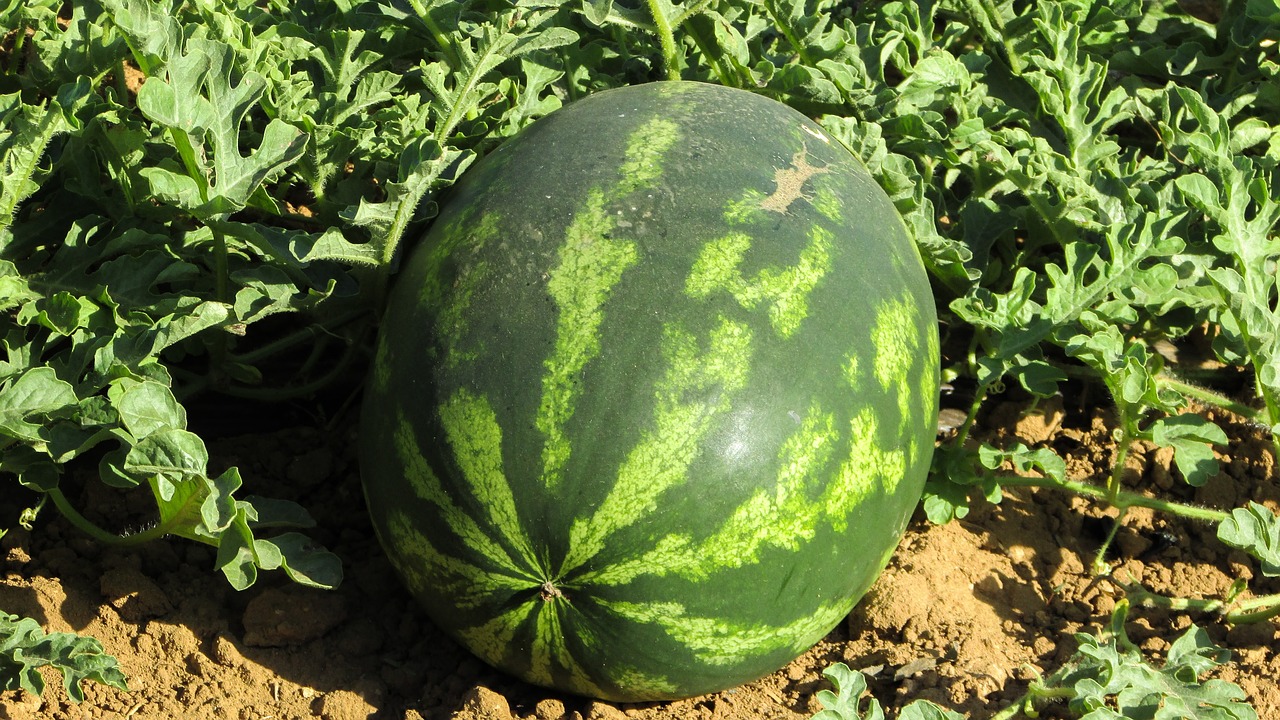In this guide, we will provide you with essential tips to ensure you harvest your watermelons at the perfect time for optimal flavor and quality.
Signs Your Watermelon is Ready to Be Harvested
Time Since Planting: Knowing the average days to maturity for your specific variety can give you a good starting point. Most watermelons take around 70 to 90 days from planting to harvest.
Color Changes: Watermelons often change color as they ripen. Look for a deep green color and a dull skin texture, which indicates maturity. The region where the watermelon rests on the ground, known as the “field spot,” should turn a creamy yellow, signaling ripeness.
Tendrils Drying: Check the vine for tendrils located near the fruit. When these tendrils turn brown and dry up, it’s a strong indicator that the watermelon is ripe.
Sound Test: One of the classic methods to test for ripeness is by thumping the watermelon. A ripe fruit will produce a deep sound, while an under-ripe watermelon tends to sound hollow or high-pitched.
Size and Shape: Consider the size and shape of the watermelon. Depending on the variety, certain watermelons can appear much larger than others. Make sure the watermelon is firm to the touch and feels adequately heavy for its size.
Harvesting Techniques
Once you’ve determined that your watermelon is ripe, it’s time to harvest with care to avoid damaging the fruit.
Tools You Need: Use a sharp garden knife or pruning shears to cut the fruit from the vine. Having clean and sanitized tools will help prevent the transfer of disease to the plant.
Cutting the Stem: When harvesting, look for a spot on the vine that is close to the watermelon. Cut the stem about 2 inches above the fruit. Avoid yanking the watermelon off, as this could bruise the fruit or damage the vine.
Handling Watermelons: Watermelons can be heavy and large, so use both hands to lift them. Avoid squeezing or dropping them, as this can lead to bruising, which affects the quality of the fruit.
Post-Harvest Storage
To keep your watermelon fresh after harvest, proper storage is essential:
Temperature: Store your harvested watermelons in a cool, dry spot. The ideal temperature is around 50-60°F (10-15°C). They can last for a week or two if stored correctly.
Keep Whole: It’s best to keep watermelons whole until you are ready to eat. Once cut, store the leftover pieces in the refrigerator to prolong freshness.
Avoid Direct Sunlight: Keep your watermelons out of direct sunlight as this can ripen them further and lead to spoilage.
Enjoying Your Watermelon
Once your watermelon is harvested, it’s time to enjoy your hard work! Watermelons can be eaten raw, added to fruit salads, blended into smoothies, or even grilled for a unique flavor. The options are endless!
Conclusion
Harvesting watermelon is an exciting part of gardening that marks the culmination of your efforts. By keeping an eye on the signs of ripeness and using proper harvesting techniques, you can ensure that your watermelon is at its peak flavor when it’s time to enjoy it. Celebrate the fruits of your labor by sharing your harvest with friends and family, and perhaps even consider exploring new recipes to showcase this refreshing summer delight.





